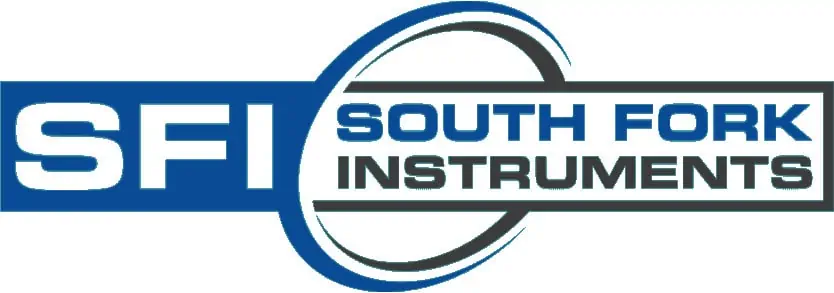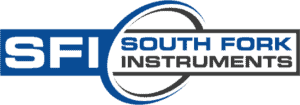In the biopharma sector as well as in other industries that rely on accurate process measurements, the continuous calibration of online UV analyzers is an established practice. But a deeper understanding of light absorbance and advances in technology prompt a pertinent question: Is there a better, more efficient way?
Calibration vs. Validation: Reviewing the Facts
Understanding Light Absorbance
The science of light absorbance is pretty straightforward. For instance, when 90% of light from a monochromatic source is lost after passing through a substance—meaning only 10% makes it to the other side—that substance exhibits an absorbance of one. Measurement of absorbance is achieved with instruments incorporating a photodiode, a device that reacts proportionally to the amount of light hitting its photoactive area. Consequently, a one absorbance change in received light equates to a log decade change in output from the diode—assuming, of course, that there’s a high-quality electronic circuit around the photodetector.
Continuous Calibration Drives Up Cost and Consumes Time
UV absorbance analyzers are widely used in biopharma separation processes to detect protein product presence in eluents from chromatography columns and in permeates in filtration systems. These devices are crucial in maximizing product yield/quality and maintaining regulatory compliance.
However, the continuous need for calibration is both costly and time-consuming. If a photodiode’s output truly reflects the absorbance of monochromatic light, an inline absorbance instrument, or photometer, should natively read out an absorbance that doesn’t require calibration. So, what prompts the need for this constant calibration?
Unpacking the Need for Calibration
The root of the calibration conundrum can be traced back to a few factors, with the quality of the optical bench being a major one. For accurate absorbance measurement, monochromatic light is essential. Many inline UV absorbance photometers employ light sources—like mercury vapor lamps—that do not generate monochromatic light. These lamps emit a plethora of light at a multitude of wavelengths. Curiously, they don’t generate light at 280 nm, the most popular wavelength utilized in biopharma separation work.
Filtering Brings Series of Drawbacks
Therefore, aggressive filtering is necessary to create a pseudo monochromatic peak for measurement. Filters manufactured using multi-cavity coatings on glass are most often used to reduce wavelengths outside of the wavelength of interest reaching the photodetector, but this does come with trade-offs. The more aggressive the filtering, the tighter the peak bandwidth butthe lower the energy of the passed light. Any remaining stray light passing through the filter can quickly affect the measurement, leading to non-linearity even at levels nearing one absorbance.
The LED-Based Photometer Solution
The solution to this problem lies in LED-based photometers, like the Kemtrak DCP007-UV photometer. These devices generate light with a much, much lower incidence of stray light, making it much. much easier to create a pseudo monochromatic light peak. With less stray light, absorbance can be measured more deeply, with greater linearity and the signal becomes a much better representation of absorbance.
Instruments that exhibit this linear response to absorbance remove the need for calibration and instead require only validation—a periodic check to confirm that the instrument is operating as expected. Successful validation is easily achieved by simulating absorbance in the instrument’s optical path. A change in measurement that falls within an expected response verifies that the instrument is functioning as expected.
Such a move away from calibration to validation is not possible with mercury vapor lamp-based instruments due to the need for calibration factor changes necessary to mitigate the effects of stray light. However, It is achievable with LED-based instruments as they intrinsically read in absorbance.
The Validation Advantage
Validation brings a range of advantages, including:
- Increased Accuracy: Validation ensures that the instrument operates as expected, reducing the chances of errors introduced during calibration by different technicians.
- Greater Consistency: By simulating absorbance in the instrument’s optical path, validation provides a more consistent method of ensuring that the instrument is working properly.
- Lower Costs: The process of calibration can be expensive and time-consuming. Validation, on the other hand, typically requires less effort and resources, leading to cost savings. As a side note, take the example of a large pharmaceutical company in Scandinavia that recently addressed the cost of calibrating absorbance monitors by implementing LED-based units, rather than mercury vapor lamp-based instruments, as it expanded its production capacity. The savings that the company will realize for the 60+ units in question will be substantial, even before taking into account potential product yield improvement and reduced loss advantages.
- Enhanced Linearity and Depth of Absorbance Measurement: LED-based photometers measure absorbance more deeply and with greater linearity than traditional lamp-based units. This enhanced performance in absorbance reading also means that routine calibration is no longer necessary, with validation of the instrument’s performance being the only requirement.
- Simplified Process: Validation is a simpler process that only requires simulating absorbance in the instrument’s optical path and observing whether the instrument responds as expected. This straightforward method is less susceptible to errors or variations in technique.
- Streamlined Compliance: Calibration often comes with a host of regulatory requirements that can be difficult and costly to maintain. Validation, however, can often streamline compliance processes, making it easier to meet industry standards and regulations.
Reading tip: For a comprehensive understanding of the impact of photometer design on photometer validation methods, read this white paper.
It’s Time to Future-Proof Your Business
As the landscape of the biopharma sector and other industries requiring accurate measurements continues to evolve, it’s critical to stay abreast of advancements that enhance efficiency and accuracy. Adopting LED-based photometers is not just a viable alternative to traditional methods—it’s a forward-thinking solution that redefines standards, reduces costs, and drives process optimization.
We encourage all decision-makers, process engineers, and quality control specialists to consider this shift from calibration to validation. It’s a step towards future-proofing your processes and keeping up with the pace of innovation.
Contact South Fork
Interested in learning more about how LED-based photometers can revolutionize your operations? Feel free to reach out to us at South Fork Instruments. Our team of experts is ready to provide insights, answer questions, and guide you through this transformative journey. Contact us today to learn more by filling out this form or calling us at (925)461-5059.
Read More
Do Ultrasonic Level Transmitters Still Have a Role in Modern Control Systems
pH Sensors in Aggressive Chemical Applications: Unlocking Better Performance and Longevity
Analog vs. Digital Memosens Probes: What’s Best for Process Analytics

